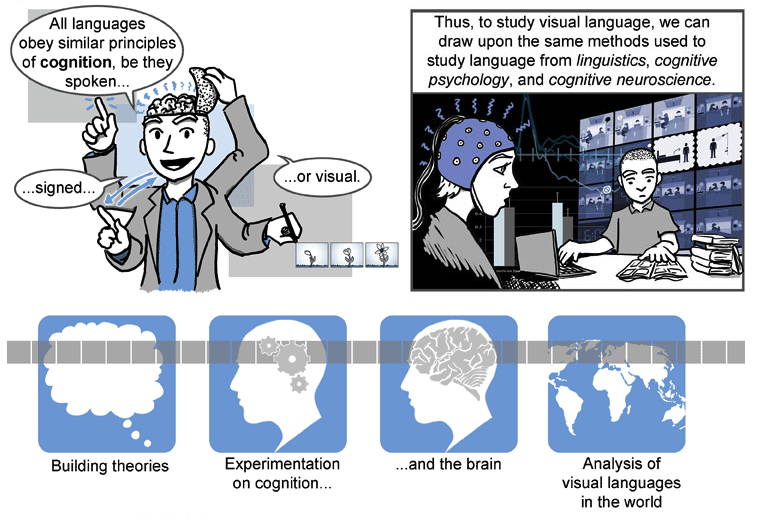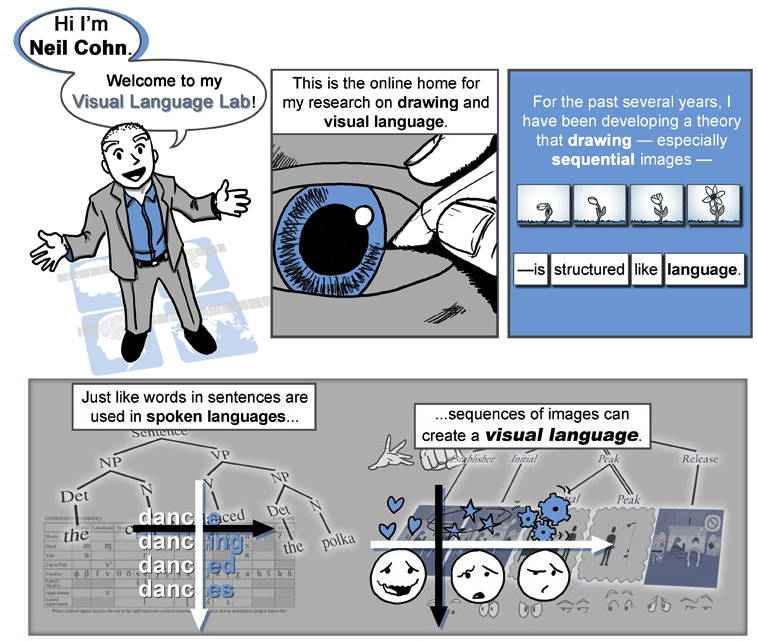 Bloomsbury Publishing released Neil Cohn‘s The Visual Language of Comics, an academic work offering an introduction to the structure and cognition of Sequential Images last December, but it slipped under our radar in the inevitable pre-Christmas madness.
Bloomsbury Publishing released Neil Cohn‘s The Visual Language of Comics, an academic work offering an introduction to the structure and cognition of Sequential Images last December, but it slipped under our radar in the inevitable pre-Christmas madness.
Reviews for the book have been very positive: Kent Worcester, a Professor of Political Science, at Marymount Manhattan College calls it “a smart, carefully organized, and exceptionally well-argued work of comics scholarship,” while former Marvel editor Carl Potts, the creator of Alien Legion, argues “it’s fascinating reading for anyone interested in visual communication.”
“Being able to tell stories with images is an important and perhaps unique human ability. Neil Cohn has done us all a favour,” enthuses award-winning writer and translator Frederik L. Schodt, “by analyzing how we can use a visual language theory to analyze comics and other forms of graphic communication; to think deeply about language and the mind.
“His years of deep thinking, and research, show in this new and provocative book.”
Drawings and sequential images are an integral part of human expression dating back at least as far as cave paintings, and in contemporary society appear most prominently in comics. Despite this fundamental part of human identity, the publishers argue little work has explored the comprehension and cognitive underpinnings of visual narratives — until now.
The Visual Language of Comics presents a provocative theory: that drawings and sequential images are structured the same as language. Building on contemporary theories from linguistics and cognitive psychology, it argues that comics are written in a visual language of sequential images that combines with text. Like spoken and signed languages, visual narratives use a lexicon of systematic patterns stored in memory, strategies for combining these patterns into meaningful units, and a hierarchic grammar governing the combination of sequential images into coherent expressions.
Much of the above will probably come as no surprise to those of us who work in the comics industry, but this book is filled with examples and illustrations, detailing each of these levels of structure, explaining how cross-cultural differences arise in diverse visual languages of the world, and describes what the newest neuroscience research reveals about the brain’s comprehension of visual narratives.
From this emerges the foundation for a new line of research within the linguistic and cognitive sciences, raising intriguing questions about the connections between language and the diversity of humans’ expressive behaviours in the mind and brain.

Artwork by Neil Cohn to promote his web site visuallanguagelab.com

Artwork by Neil Cohn to promote his web site visuallanguagelab.com
Neil Cohn, received his Ph.D. in Psychology from Tufts University working with Ray Jackendoff, Gina Kuperberg, and Phil Holcomb, has been fascinated with drawing and comics his whole life. By age 10, he was selling his own created comics via mail order catalogue, and, starting at 15, he spent his teenage summers throughout the 1990s working for Image Comics and Todd McFarlane Productions at Comic-Con International. His artwork appears in Meditations (published in 2005), We the People: A Call to Take Back America with Thom Hartmann, A User’s Guide to Thought and Meaning by Ray Jackendoff, and The Graphic Canon, Volume 2 edited by Russ Kick and published in 2012.
While taking a linguistics class as an undergraduate at UC Berkeley in 1999, Neil began noticing commonalities between the underlying structure of language and the structure found in the “visual language” used in comics. Since then, his research has argued that the structure, cognition, and development of this visual language is similar to that of spoken and signed languages.
His book Early Writings on Visual Language, published in 2003, describes the initial formulation of these ideas. Having refined this research over another decade, The Visual Language of Comics lays the foundations for the study of this visual language as a subfield of linguistics, psychology, and cognitive science.
Neil is currently a postdoctoral research fellow at the Center for Research in Language at UC San Diego working with Marta Kutas and Jeff Elman.
• Neil Cohn’s work is online at www.visuallanguagelab.com
The founder of downthetubes, which he established in 1998. John works as a comics and magazine editor, writer, and on promotional work for the Lakes International Comic Art Festival. He is currently editor of Star Trek Explorer, published by Titan – his third tour of duty on the title originally titled Star Trek Magazine.
Working in British comics publishing since the 1980s, his credits include editor of titles such as Doctor Who Magazine, Babylon 5 Magazine, and more. He also edited the comics anthology STRIP Magazine and edited several audio comics for ROK Comics. He has also edited several comic collections, including volumes of “Charley’s War” and “Dan Dare”.
He’s the writer of “Pilgrim: Secrets and Lies” for B7 Comics; “Crucible”, a creator-owned project with 2000AD artist Smuzz; and “Death Duty” and “Skow Dogs” with Dave Hailwood.
Categories: British Comics - Books, Comic Art, Creating Comics
 Sneak Peek: 2000AD Art of Kevin O’Neill: Apex Edition, available to pre-order now
Sneak Peek: 2000AD Art of Kevin O’Neill: Apex Edition, available to pre-order now  In Review: The Modesty Blaise Artists (Illustrators Special)
In Review: The Modesty Blaise Artists (Illustrators Special)  Pre-orders open for Rebellion’s “Judge Dredd by Mick McMahon Apex Edition”
Pre-orders open for Rebellion’s “Judge Dredd by Mick McMahon Apex Edition”  Can you help in a hunt for original artwork by John M. Burns?
Can you help in a hunt for original artwork by John M. Burns?